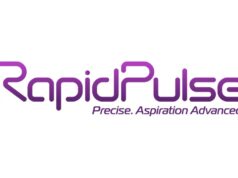 A multicentre study has reported that clot perviousness or permeability, the ability for contrast used during the initial imaging workup to seep through a clot, as estimated by computed tomography (CT) imaging, is associated with ”first-pass success” in large vessel occlusion (LVO) strokes initially treated with an aspiration thrombectomy approach.
A multicentre study has reported that clot perviousness or permeability, the ability for contrast used during the initial imaging workup to seep through a clot, as estimated by computed tomography (CT) imaging, is associated with ”first-pass success” in large vessel occlusion (LVO) strokes initially treated with an aspiration thrombectomy approach.
A mechanical device can be used to remove a clot blocking blood flow to the brain in certain patients that suffer from a severe ischaemic stroke. The minimally invasive procedure either performs an aspiration thrombectomy, which suctions the clot directly out of a large artery to the brain or is performed by grabbing and extracting the blockage with a stent known as stent-retrieval thrombectomy.
Last year, a major trial named COMPASS (Aspiration thrombectomy versus stent retriever thrombectomy as first-line approach for large vessel occlusion) found both catheter-guided techniques to be equally safe and effective as first-line approaches for treating emergent large vessel occlusions (ELVO), the most destructive type of ischaemic stroke.
Now, a multicentre study led by the University of South Florida Health (USF Health) Department of Neurosurgery and Tampa General Hospital, reports that clot perviousness, as estimated by CT imaging, is associated with “first-pass success” in ELVO patients initially treated with the aspiration thrombectomy approach; which means achieving complete reopening of a blocked artery in the first attempt with a thrombectomy device in the ELVO patients treated with the approach.
The findings from this post hoc analysis of 165 eligible patients enrolled in the COMPASS trial were published on 17 July in the Journal of Neurointerventional Surgery.
The study found that the treatment success of the stent retriever-first approach for an LVO stroke was less dependent on clot perviousness. Time-sensitive, successful removal of the clot restores blood flow and, therefore, oxygen to the brain, improving the likelihood of faster stroke recovery and reduced complications and disability.
“Currently, physicians who treat strokes with thrombectomy are ‘in the dark’. We have a variety of tools available but, frankly, we often do not know which particular device will be most effective in a particular patient”, said the paper’s lead author Max Mokin (Tampa, USA), associate professor of neurosurgery and neurology at the USF Health Morsani College of Medicine and Tampa General Hospital. “This study provides the first set of clues to guide us in selecting the devices (aspiration and/or stent retrievers) that may provide the most advantage, making the thrombectomy procedure safer, faster and ultimately more effective”, he adds.
These data are the first to indicate that highly pervious clots may result in better treatment success after first-attempt clot removal using the aspiration thrombectomy technique. However, clots with low perviousness are more resistant to either thrombectomy approach, the researchers report, and further examination is needed to determine the most effective way to treat ELVO in this population of patients.













